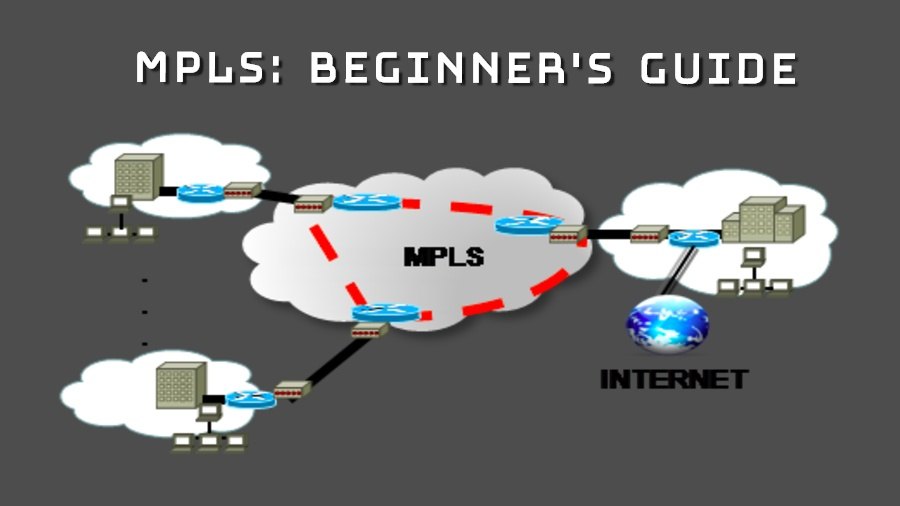Physical Address
304 North Cardinal St.
Dorchester Center, MA 02124


Global Blog Planet


Global Blog Planet


In the realm of networking and telecommunications, Multiprotocol Label Switching (MPLS) stands out as a sophisticated and versatile technology that has revolutionized the way data is transmitted across networks. Whether you’re a networking enthusiast, IT professional, or someone curious about the world of telecommunications, this comprehensive guide aims to demystify MPLS for beginners, exploring its fundamentals, applications, and the advantages it brings to modern networking architectures.
Multiprotocol Label Switching (MPLS) is a protocol-agnostic technique used to speed up and shape the flow of network traffic. Unlike traditional IP routing, which relies on the destination address for packet forwarding, MPLS uses labels to determine the most efficient path for data packets through the network.This ensures that critical applications, such as voice and video, receive the necessary resources and bandwidth for optimal performance.
At its core, MPLS works by attaching a label to each data packet at the ingress router. This label contains information about the packet’s destination and the desired path through the network. As the packet traverses the MPLS-enabled network, routers use these labels to make forwarding decisions, enhancing efficiency and reducing latency.
In an MPLS network, routers that participate in label switching are referred to as Label Switch Routers (LSRs). These routers are responsible for examining and swapping labels as packets move through the network.
The Label Edge Router (LER) is the router at the network’s edge that assigns labels to incoming packets and removes labels from outgoing packets. LERs play a crucial role in determining the initial path of a packet through the MPLS network.
The Label Distribution Protocol (LDP) is the mechanism used by routers in an MPLS network to exchange label information. It ensures that all routers in the network have a consistent understanding of the labels assigned to specific paths.Craft content that not only educates but also engages your audience. Break down complex MPLS concepts into easily digestible sections, use descriptive headings, and include a call-to-action encouraging readers to explore further or share their experiences with MPLS implementations.
One of the primary applications of MPLS is traffic engineering. By dynamically routing traffic based on label information, MPLS enables network operators to optimize the use of network resources, enhance bandwidth utilization, and reduce congestion.Identify relevant keywords related to MPLS, such as “MPLS basics,” “Label Switch Router,” or “MPLS applications.”
MPLS is widely used to create Virtual Private Networks (VPNs) for secure and efficient data transmission between geographically dispersed locations. MPLS-based VPNs provide a reliable and scalable solution for interconnecting remote offices or connecting users to corporate networks.
MPLS offers superior performance compared to traditional IP routing. By using labels to make forwarding decisions, MPLS reduces the processing overhead on routers, leading to faster packet forwarding and lower latency.Unlike traditional IP routing, which relies on the destination address for packet forwarding, MPLS uses labels to determine the most efficient path for data packets through the network.This ensures that critical applications, such as voice and video, receive the necessary resources and bandwidth for optimal performance.
MPLS enables the implementation of Quality of Service (QoS) policies, allowing network operators to prioritize specific types of traffic. This ensures that critical applications, such as voice and video, receive the necessary resources and bandwidth for optimal performance.
To ensure that your insights into MPLS reach a wider audience, incorporating effective SEO strategies into your online content is essential.
Identify relevant keywords related to MPLS, such as “MPLS basics,” “Label Switch Router,” or “MPLS applications.” Naturally integrate these keywords into your content to enhance its visibility on search engines.
Include engaging visuals, such as diagrams illustrating MPLS packet forwarding, infographics explaining MPLS components, or charts showcasing its advantages. Optimize these visuals with descriptive file names and alt text to improve their discoverability through image searches.
Craft content that not only educates but also engages your audience. Break down complex MPLS concepts into easily digestible sections, use descriptive headings, and include a call-to-action encouraging readers to explore further or share their experiences with MPLS implementations.
Segment Routing (SR) is an emerging trend in MPLS that simplifies network routing and enhances flexibility. SR allows network operators to define paths for packets using a segment identifier, providing more granular control over traffic flows.
The integration of MPLS with Software-Defined Networking (SDN) is gaining traction. SDN enables centralized control and programmability of network resources, enhancing the agility and responsiveness of MPLS-based networks.
MPLS, with its label-switching mechanism, has become a cornerstone in modern networking, offering enhanced performance, efficiency, and scalability. This guide aimed at beginners provides a foundational understanding of MPLS, from its basic principles to practical applications and advantages. By optimizing online content with effective SEO strategies, this guide aims to contribute to the dissemination of knowledge about MPLS and its role in shaping the future of telecommunications and networking. As MPLS continues to evolve, staying informed about emerging trends ensures that network professionals are well-equipped to harness its full potential in building robust and efficient communication infrastructures.